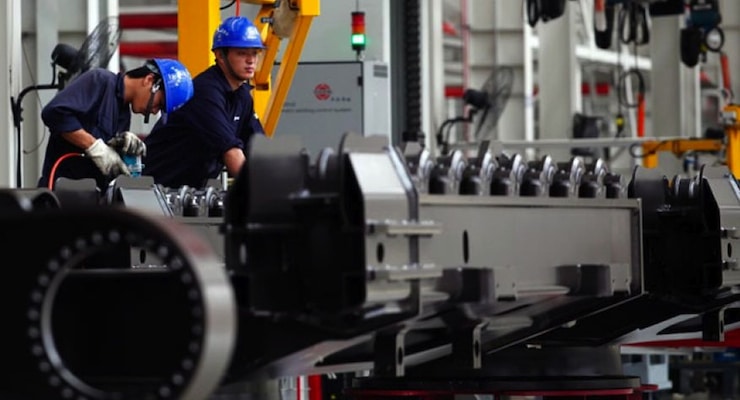

American workers at a manufacturing plant for long-lasting durable goods. (PHOTO: REUTERS)
The Commerce Department reported Wednesday that orders for long-lasting manufactured durable goods rose in July for the second straight month, beating economists’s expectations.
New orders for durable goods — products designed to last at least three years, like refrigerators and fighter jets — rose a seasonally adjusted 2% in July from a month earlier, the Commerce Department said Wednesday.
Orders for durable goods in June were revised to 4.1% juxtaposed to the initially estimated 3.4%. Economists surveyed by The Wall Street Journal had expected overall orders to rise 0.1%. However, durable goods data are volatile pieces of information and routinely undergo large, almost unbelievable revisions. Still, the manufacturing sector has struggled badly over the last 7-plus year, as regulation, mandates, and a strong dollar have made U.S. manufactured goods far more expensive for overseas buyers.
July’s increase is partly due to a gain in investment by businesses in new machinery, electronics and other goods. New orders for non-defense capital goods–excluding aircraft, which is considered a proxy for business spending on equipment and software–also rose for the second straight month. July’s rise of 2.2% was the largest gain since June 2014. June’s gains in the same category was revised up to 1.4% from a previous estimate of 0.9%.
Meanwhile, to be sure, orders in transportation predominantly fueled July’s gain, jumping 4.7% on the month. The results reflect a stronger demand for motor vehicles, as civilian aircraft orders were down 6%. Yet, the nation’s largest aircraft manufacturer, Boeing Co. (NYSE:BA) reported to have received fewer orders for planes in July than June.
Excluding the transportation sector, durable goods orders rose just 0.6%. Excluding defense, which is widely considered another volatile sector, durable goods orders rose 1%.
Through July, overall new orders of durable goods are still down 5.1% compared with the same period a year earlier. Industrial production, a measure of output in the manufacturing, utilities and mining sectors, rose a seasonally adjusted 0.6% in July, according to a Federal Reserve report released earlier this month. A survey of supply-chain executives conducted by the Institute for Supply Management found U.S. manufacturing expanded at a slower pace in July than in June.







Anonymous / August 26, 2015
Great article
/